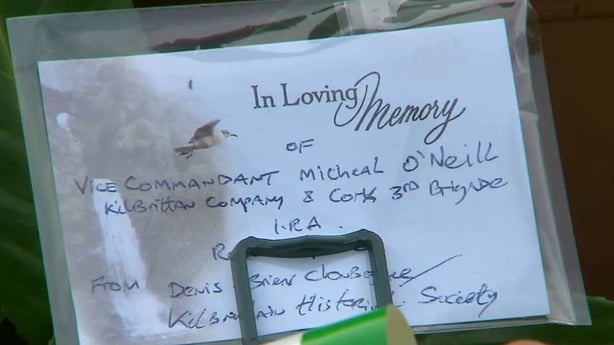A week of private and public commemorations have been marked in the parishes most affected by the notorious sectarian murders of 13 Protestants in west Cork in April 1922.
They were led by Church of Ireland Bishop of Cork, Cloyne & Ross, Dr Paul Colton, who said we need to tell - but also wrestle with - "every story around the creation of the State in this, the Decade of Remembrance".
Known as the Bandon Valley Killings, they happened as the British Forces and the RIC were withdrawing from Ireland.
The deaths occurred during a truce after the end of the War of Independence and before the outbreak of the Civil War that June.
The 13 men - aged from 16 to 82 - were murdered at various locations in the Bandon Valley over three days between 26 and 28 April following the shooting dead of IRA Acting Comdt Michael O'Neill by a retired British Army officer Herbert Woods.
We need your consent to load this rte-player contentWe use rte-player to manage extra content that can set cookies on your device and collect data about your activity. Please review their details and accept them to load the content.Manage Preferences
O'Neill and three others on 'special duty' broke into a house in the Ovens area belonging to relatives of Woods - and was shot dead by him.
The 13 murders that followed O'Neill's killing led to some 100 Protestant families leaving west Cork in the aftermath as they no longer felt safe.
Bishop Colton laid wreaths at the graves of all 14 who died that week, including that of Michael O'Neill in Kilbrittain.
"There were 14 - twelve Protestants, one Methodist and one Roman Catholic but we remember them all because they were all killed and they are all part of the story of this week, and that is very, very important," he told attendees.

"I am not in a position to adjudicate on the historiography of that period but as lead pastor in this diocese today, my primary duty, having consulted with the local clergy, who have listened to descendants, is to ensure that in prayer and liturgy, these people and events are appropriately remembered in the context of this Decade of Centenaries."
Historian Andy Bielenberg of the School of History at UCC said of the 13 who were targeted "the first three would be explained as revenge for the killing of Mick O'Neill, the subsequent 10 killings are more complicated and harder to explain.
"But it does seem that the IRA was working off some kind of a black list they had constructed of people who are unfriendly to the IRA or were sympathetic to the Crown forces."







